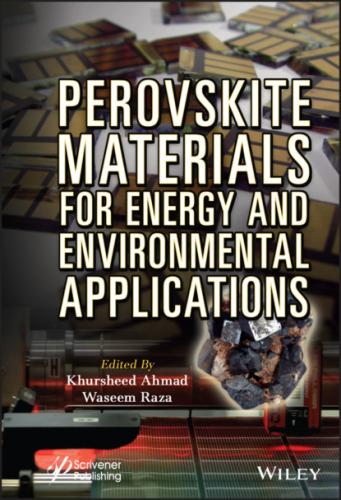Table of Contents
1 Cover
4 Preface
5 1 Computational Approach for Synthesis of Perovskite Solar Cells 1.1 Introduction 1.2 Preliminary Steps 1.3 Advanced Semiconductor Analysis (ASA) 1.4 Analysis of Microelectronic and Photonic Structures (AMPS) 20 1.5 Automat for Simulation of Heterostructures (AFORS-HET) 1.6 Solar Cell Capacitance Simulator (SCAPS) 1.7 Conclusion References
6 2 Fundamentals of Perovskite Solar Cells 2.1 Introduction 2.2 Structure 2.3 Working Mechanism of PSC 2.4 Device Architecture 2.5 Properties 2.6 Drawbacks and Ongoing Challenges of PSCs 2.7 Conclusion Acknowledgment References
7 3 Surface Morphological Effects on the Performance of Perovskite Solar Cells 3.1 Introduction 3.2 Morphology Control 3.3 Effect of Various Parameters on Growth of Perovskite References
8 4 Advanced Synthesis Strategies for Single Crystal Perovskite Halides 4.1 Introduction 4.2 Popular Single Crystal Growth Techniques 4.3 Other Techniques Conclusions References
9 5 Synchrotron-Based Techniques for Analysis of Perovskite Solar Cells 5.1 Introduction 5.2 Synchrotron Techniques, Their Limitations and Advantages 5.3 Synchrotron Radiation X-Ray Diffraction/Scattering (SR-XRD) 5.4 In Situ XRD 5.5 Small-Angle X-Ray Scattering 5.6 Wide-Angle X-Ray Scattering 5.7 Synchrotron Radiation-Based X-Ray Absorption Techniques 5.8 X-Ray Absorption Near Edge Structure 5.9 Extended X-Ray Absorption Fine Structure 5.10 Conclusions References
10 6 Recent Progress on Perovskite-Based Solar Cells 6.1 Introduction 6.2 Device Structure and Working Principle of PSCs 6.3 Perovskite-Based Solar Cells 6.4 Conclusion References
11 7 BiFeO3-Based Materials For Augmented Photoactivity 7.1 Introduction 7.2 Structure, Physicochemical, and Photocatalytic Activity of BiFeO3 7.3 Elemental Doping in BFO 7.4 BFO Semiconductor Heterojunction Construction 7.5 Separation Ability and Reproducibility 7.6 Conclusion and Perspectives 7.7 Acknowledgement References
12 8 Photocatalytic Degradation of Pollutants Using ZnTiO3-Based Semiconductor 8.1 Introduction 8.2 Synthesis of ZnTiO3 8.3 Fundamental Need and Basic Mechanism for Photocatalytic Degradation of Pollutants 8.4 Photocatalytic Degaradation of Pollutants Based on ZnTiO3 8.5 Conclusion References
